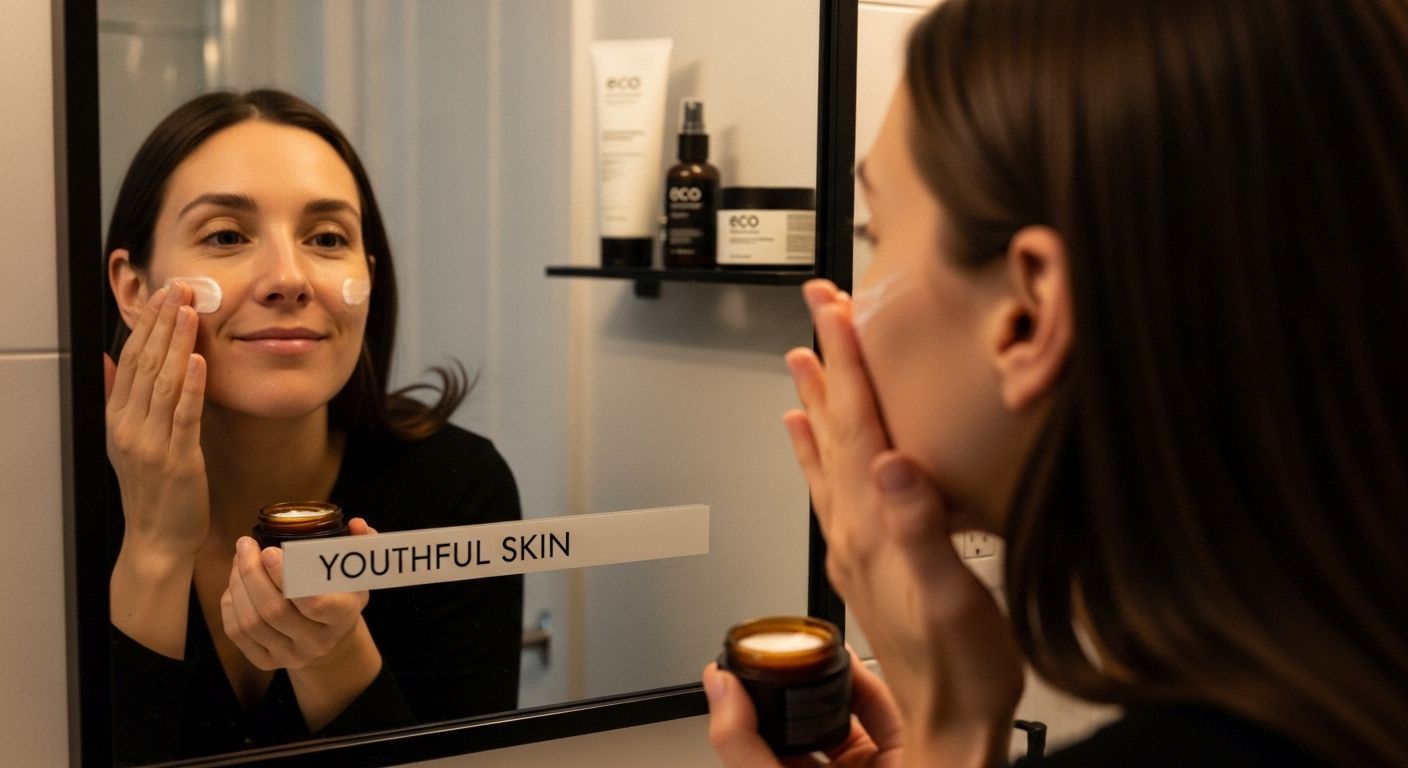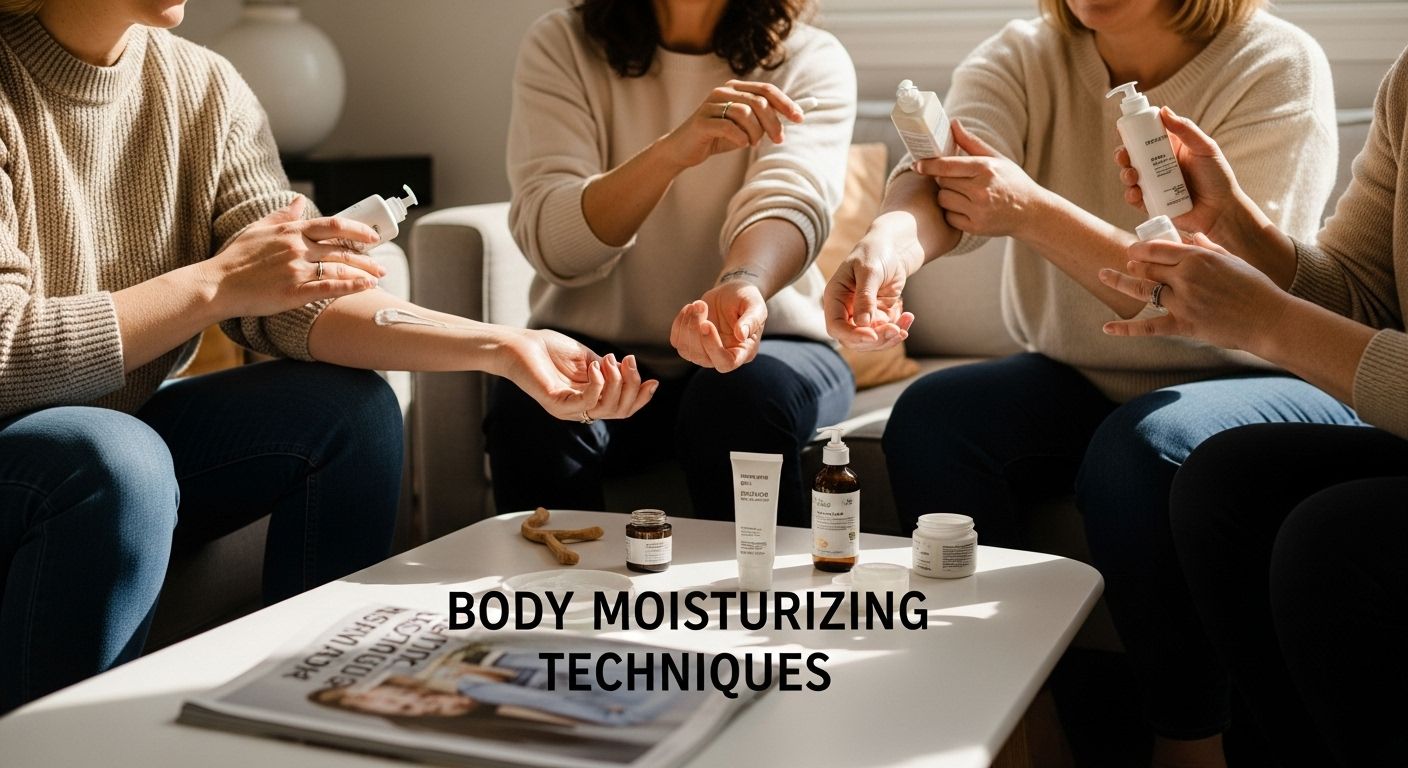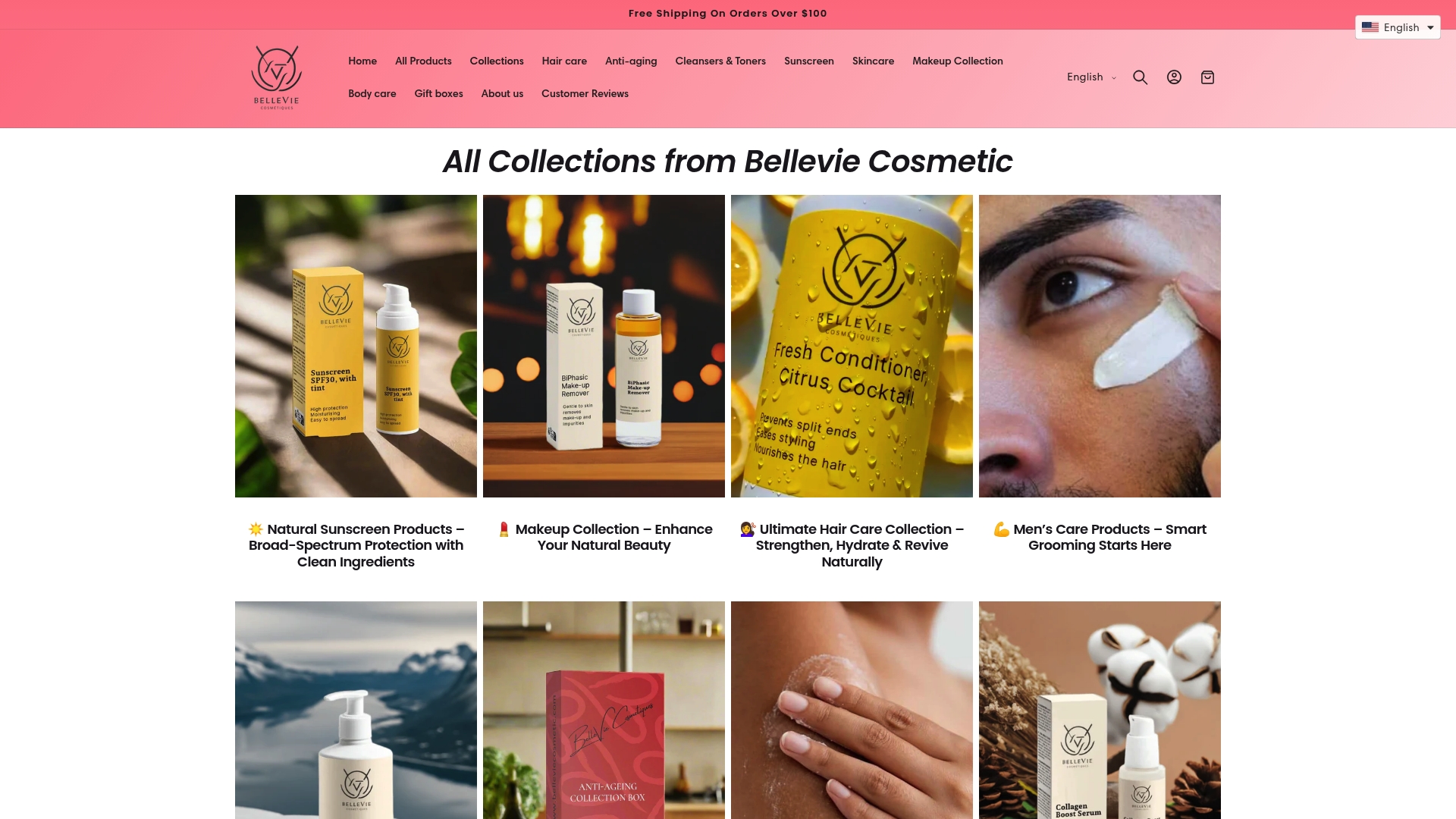
Most people think slathering on a moisturizer once a day is enough to keep your skin glowing. Surprisingly, hyaluronic acid can hold up to 1000 times its weight in water and the timing of your routine actually matters even more than the type of lotion you use. Forget what you’ve been told about fancy products because the real secret to healthy, youthful skin comes down to when and how you do it—not just what you put on.
Table of Contents
- Understanding Skin Hydration Needs
- Choosing the Best Moisturizers and Ingredients
- Step-by-Step Moisturizing Techniques for Face and Body
- Sustainable and Sensitive Skin Moisturizing Tips
Quick Summary
| Takeaway | Explanation |
|---|---|
| Hydrate Your Skin Right After Bathing | Apply moisturizer on damp skin using the soak and seal method for optimal moisture retention. |
| Understand Your Skin Type for Product Selection | Choose ingredients tailored to your skin type, like lightweight options for oily skin or richer formulas for dry skin. |
| Incorporate Natural Ingredients for Sensitive Skin | Use eco-friendly and natural moisturizers, such as marine algae and plant oils, to support hydration without irritation. |
| Practice Consistent Moisturization | Develop a daily routine that ensures skin maintains its hydration, adapting products and techniques as needed. |
| Pay Attention to Environmental Factors | Recognize how climate and lifestyle impacts your skin hydration and adjust your skincare strategies accordingly. |
Understanding Skin Hydration Needs
Skin hydration is far more than a simple beauty ritual it’s a fundamental aspect of maintaining healthy, resilient skin. Your skin’s ability to retain moisture directly impacts its appearance, texture, and overall health. Understanding the intricate mechanisms of skin hydration can transform your approach to skincare and help you develop more effective moisturizing techniques.
The Science Behind Skin Moisture
At its core, skin hydration involves maintaining an optimal balance of water within the skin’s layers. Research published in the International Journal of Molecular Sciences reveals that natural moisturizing factors (NMF) play a crucial role in regulating skin hydration. These intrinsic components help the skin retain water, protect against environmental stressors, and maintain its protective barrier.
The skin’s hydration process is complex and involves multiple layers working together. The outermost layer, known as the stratum corneum, acts like a protective shield that prevents water loss and shields against external irritants. When this barrier becomes compromised, skin experiences dryness, sensitivity, and accelerated aging. Proper hydration supports this barrier function, ensuring your skin remains resilient and healthy.
Factors Influencing Skin Hydration
A comprehensive review in Dermatology Research and Practice highlights several key factors that impact skin hydration:
-
Environmental Conditions: Humidity, temperature, and wind can significantly affect skin moisture levels. Low humidity environments tend to draw moisture away from the skin, leading to increased dryness and potential irritation.
-
Lifestyle Factors: Diet, hydration, sleep, and stress levels directly influence skin health. Adequate water intake, balanced nutrition, and proper rest contribute to maintaining optimal skin moisture.
-
Age and Skin Type: As we age, the skin’s natural ability to retain moisture decreases. Different skin types require unique hydration strategies, with sensitive and mature skin often needing more intensive moisturizing techniques.
Understanding these factors allows you to develop a more targeted approach to skin hydration. It’s not just about applying a moisturizer it’s about creating a comprehensive strategy that addresses your skin’s unique needs and supports its natural moisture retention mechanisms.
![]()
Personalized Hydration Strategies
Recognizing that each person’s skin is unique means acknowledging that there’s no one-size-fits-all approach to hydration. Pay attention to how your skin responds to different moisturizing techniques, environmental changes, and skincare products. Some individuals might require lighter, water-based moisturizers, while others need richer, more occlusive formulations.
Consider factors like your skin’s sensitivity, tendency towards dryness or oiliness, and specific concerns such as acne, aging, or uneven texture. By developing a personalized hydration strategy, you can ensure your skin remains balanced, protected, and radiant.
Remember, effective skin hydration is a continuous process that requires consistent care, attention, and adaptation. Your skin’s needs will change over time, so remain flexible and responsive to its evolving requirements.
Choosing the Best Moisturizers and Ingredients
Selecting the right moisturizer is a critical step in achieving healthy, vibrant skin. Not all moisturizers are created equal, and understanding the nuanced world of skincare ingredients can dramatically transform your hydration strategy.
Key Moisturizer Components
Research published in the Journal of Clinical and Aesthetic Dermatology reveals a comprehensive framework for understanding moisturizer ingredients. These crucial components are categorized into three primary types: humectants, emollients, and occlusives. Each plays a unique role in maintaining skin hydration and supporting the skin’s protective barrier.
Here is a comparison table summarizing the key functions and examples of humectants, emollients, and occlusives, helping readers distinguish between these primary moisturizer components at a glance.
| Component Type | Primary Function | Common Examples |
|---|---|---|
| Humectants | Attract and hold water | Hyaluronic acid, glycerin, aloe vera, urea |
| Emollients | Soften and smooth skin | Squalane, jojoba oil, ceramides |
| Occlusives | Seal in moisture | Petrolatum, beeswax, plant-based oils |
Humectants are moisture-attracting ingredients that draw water from the environment and deeper skin layers. Powerful humectants like hyaluronic acid can hold up to 1000 times their weight in water, providing intense hydration. Other effective humectants include glycerin, aloe vera, and urea, which help retain moisture and improve skin elasticity.
Emollients work to soften and smooth the skin by filling gaps between skin cells. Ingredients such as squalane, jojoba oil, and ceramides help create a smooth, flexible surface while supporting the skin’s natural lipid barrier. These ingredients are particularly beneficial for individuals with dry, rough, or aging skin.
Occlusives form a protective layer on the skin’s surface, preventing water loss and creating a seal that locks in moisture. Ingredients like petrolatum, beeswax, and certain plant-based oils serve as excellent occlusives, especially for those with extremely dry or sensitive skin.
Selecting Ingredients for Your Skin Type
Choosing moisturizers isn’t a one-size-fits-all approach. Your skin type and specific concerns should guide your ingredient selection:
-
Oily and Acne-Prone Skin: Look for lightweight, non-comedogenic moisturizers with ingredients like niacinamide, salicylic acid, and hyaluronic acid. These help balance oil production while providing essential hydration.
-
Dry and Sensitive Skin: Seek rich, ceramide-based moisturizers with soothing ingredients like aloe vera, chamomile, and panthenol. These help repair the skin barrier and provide deep, lasting hydration.
-
Combination Skin: Opt for gel-cream formulations that balance hydration without excess oiliness. Ingredients like glycerin and lightweight botanical extracts work well for this skin type.
-
Mature Skin: Prioritize moisturizers with peptides, bakuchiol (a natural retinol alternative), and antioxidants. These ingredients support collagen production and combat signs of aging while maintaining optimal hydration.
Advanced Hydration Strategies
Beyond traditional moisturizers, consider incorporating specialized hydration techniques. Layering products with different molecular weights can enhance moisture penetration. Start with lightweight, water-based serums containing hyaluronic acid, then follow with a more substantial cream or facial oil.
Pay attention to how your skin responds to different ingredients. Skin hydration is dynamic and can change with factors like climate, stress, and hormonal shifts. Be prepared to adjust your moisturizing routine accordingly.
Remember that consistent, targeted hydration is key. A well-chosen moisturizer doesn’t just sit on the skin’s surface it actively supports your skin’s natural regeneration and protection mechanisms. Invest time in understanding your skin’s unique needs, and you’ll be rewarded with a healthy, radiant complexion.
Step-by-Step Moisturizing Techniques for Face and Body
Moisturizing is an art that requires precision, understanding, and a tailored approach for different body areas. Mastering the right techniques can transform your skincare routine from a basic task to a nourishing, targeted ritual that supports skin health and radiance.
The Soak and Seal Method
Research published in clinical dermatology literature introduces the powerful “soak and seal” technique, a scientifically proven approach to maximizing skin hydration. This method involves applying moisturizer to slightly damp skin immediately after bathing, which helps lock in moisture more effectively than applying products to dry skin.
For facial moisturizing, follow these precise steps:
This process table outlines the step-by-step soak and seal method for facial moisturizing, providing a clear, scannable guide for readers to follow.
| Step | Action |
|---|---|
| 1 | Cleanse with gentle, pH-balanced cleanser |
| 2 | Pat skin partially dry, leaving it slightly damp |
| 3 | Apply a lightweight serum with hyaluronic acid |
| 4 | Follow immediately with your chosen moisturizer |
| 5 | Gently pat or massage product into skin using upward motions |
- Cleanse your face with a gentle, pH-balanced cleanser
- Pat skin partially dry, leaving it slightly damp
- Apply a lightweight serum with hyaluronic acid
- Follow immediately with your chosen moisturizer
- Gently pat or massage the product into your skin using upward motions
This technique ensures maximum product absorption and creates a protective barrier that prevents moisture loss throughout the day.
Body Moisturizing Techniques
Body skin requires a different approach compared to facial skin. Areas like elbows, knees, and feet often need more intensive hydration. Key body moisturizing strategies include:
- Exfoliation: Gently remove dead skin cells once or twice weekly to improve moisturizer penetration
- Layering: Use body oils or serums before cream-based moisturizers for deeper hydration
- Temperature Matters: Use lukewarm water during bathing to prevent stripping natural oils
Pay special attention to typically neglected areas. Hands, neck, and décolletage often show early signs of dryness and aging. Apply moisturizer to these regions with the same care and consistency you dedicate to your face.

Advanced Moisturizing Strategies
Beyond basic application, consider these advanced techniques to elevate your hydration routine:
- Nighttime Repair: Use richer, more occlusive moisturizers before bed when skin’s regenerative processes are most active
- Seasonal Adaptation: Switch to heavier moisturizers during winter and lighter, water-based formulations in summer
- Targeted Treatment: Use specialized products for specific body areas like eye creams for delicate eye regions or heel balms for dry feet
Consistent application is more important than occasional intensive treatments. Develop a daily routine that becomes second nature, allowing your skin to maintain optimal hydration levels.
Remember that skin is dynamic and responsive. Monitor how your skin reacts to different techniques and be willing to adjust your approach. Hydration is not a one-time event but a continuous process of nurturing and supporting your skin’s natural balance.
Sustainable and Sensitive Skin Moisturizing Tips
Addressing sensitive skin while maintaining environmental responsibility requires a thoughtful approach that balances effective hydration with eco-conscious practices. Understanding how to nurture delicate skin without compromising sustainability is crucial for modern skincare enthusiasts.
Natural and Eco-Friendly Moisturizing Solutions
Research exploring marine ingredients reveals promising sustainable alternatives for sensitive skin care. Brown algae and other marine botanicals offer potent hydration while being cultivated with minimal environmental impact. These natural ingredients provide gentle, effective moisturization without harsh synthetic chemicals.
Key sustainable ingredients for sensitive skin include:
- Marine algae extracts
- Plant-based oils like jojoba and hemp seed
- Organic beeswax
- Botanical hydration complex
- Naturally derived hyaluronic acid
A nature-based skincare study demonstrated that natural oil-based cleansers and creams with botanical anti-inflammatories can be significantly more tolerable for sensitive skin compared to synthetic alternatives. This approach not only supports skin health but also reduces environmental burden.
Advanced Hydration for Sensitive Skin
Managing sensitive skin requires a nuanced strategy. Innovative hydrogel research highlights cross-linked hyaluronic acid formulations as particularly effective for treating dry, reactive skin conditions. These advanced moisturizing techniques provide targeted hydration without triggering inflammatory responses.
Consider these sensitive skin moisturizing principles:
- Patch test new products before full application
- Choose fragrance-free, hypoallergenic formulations
- Look for minimal ingredient lists
- Prioritize products with soothing botanical extracts
- Avoid potential irritants like alcohol and synthetic fragrances
Holistic Sensitive Skin Care Approach
Sustainable sensitive skin care extends beyond product selection. Consider a holistic approach that includes:
- Minimizing water waste during skincare routines
- Supporting brands with eco-friendly packaging
- Choosing multi-purpose products to reduce overall consumption
- Understanding your skin’s unique microbiome
- Implementing stress reduction techniques that support skin health
Remember that sustainable skincare is about making intentional choices that benefit both your skin and the environment. Each product selection is an opportunity to support personal wellness and planetary health.
Consistent, gentle care is the cornerstone of managing sensitive skin. By embracing natural ingredients, advanced hydration techniques, and mindful consumption, you can achieve radiant, healthy skin while minimizing environmental impact.
Frequently Asked Questions
What are the best ways to moisturize my skin for maximum hydration?
Proper moisturizing involves applying products to slightly damp skin immediately after bathing, known as the soak and seal method. This technique locks in moisture more effectively than applying moisturizer to dry skin.
How do I choose a moisturizer based on my skin type?
Select products that cater to your specific skin type. For oily skin, look for lightweight, non-comedogenic options. Dry and sensitive skin benefits from rich, ceramide-based moisturizers, while mature skin should focus on products with peptides and antioxidants.
What ingredients should I look for in a moisturizer to support sensitive skin?
Opt for natural and eco-friendly ingredients such as marine algae, plant-based oils, and hypoallergenic formulations. These help soothe irritation while providing essential hydration without harsh chemicals.
Can I layer different moisturizing products for better results?
Yes, layering products with different molecular weights can enhance hydration. Start with a lightweight serum, like one containing hyaluronic acid, and follow up with a heavier cream or oil to seal in moisture.
Unlock Deeper Skin Hydration with BelleVie Clean Beauty
Are you tired of moisturizing routines that leave your skin feeling dry, oily, or simply not refreshed? The article showed you how the right timing and ingredients are critical for moisture retention and barrier repair, and how applying your moisturizer on damp skin can make a noticeable difference. But finding pure formulas that actually support healthy, youthful skin can be overwhelming, especially when you have to avoid harsh chemicals or artificial additives.

Take your skincare journey from knowledge to action. Discover BelleVieCosmetic.com where every product is crafted with clinically proven actives like hyaluronic acid, ceramides, and clean botanical extracts. Choose from our hydrating moisturizer collections or explore natural facial cleansers, SPF50 sunscreen sticks, and body care essentials backed by European standards. Experience visibly healthier, softer skin and enjoy real results made without compromise. Shop now for fast shipping, exclusive gifts, and a chance to finally achieve the hydrated glow you deserve.
💬 Not sure if you’re moisturizing your skin the right way?
Chat directly with our AI Skincare Advisor on Instagram and get personalized hydration tips and product recommendations for your skin type.
👉 Start Chat Now on Instagram AI
